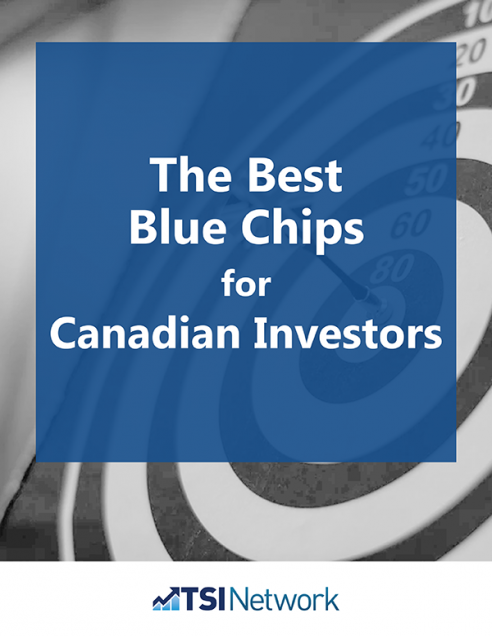
There are some basic guidelines to follow when choosing the right REIT to invest in. Equity is the most expensive source for capital. Additionally, additional shares can be a claim on the REIT’s future cash flow. Therefore, it is important to weigh the cost of dividends before making a decision. The yield of U.S. Treasury bond bonds is generally considered the risk-free rate. However, this will depend on your personal preferences. Beta, which refers to the relative volatility of stock prices versus the S&P 500 500, is another important factor. Beta can be calculated for a few months or a few years.
SL Green Realty
SL Green Realty is a strong REIT and has a positive yield of 4.9%. The company has an excellent balance sheet and isn't subject to excessive debt. It ended the second quarter of 2022 having $1.3 billion in liquidity. Its fixed-charge coverage ratio of 3.03X gives it plenty of financial flexibility to take advantage future growth opportunities.
The SL Green Realty Corporation specializes in Manhattan commercial property. It is a member of National Association of Real Estate Investment Trusts. This association represents publicly traded real property companies. Its members include REITs, other businesses that own real estate, and research firms that study the real estate industry.

STORE Capital Corporation
STORE Capital Corporation is a solid REIT with a high yield dividend. It boasts over 2,000 locations and is responsible for more than $100 million in monthly new purchases. Its business model is based on service-oriented businesses and Warren Buffett has bought a large chunk of the stock. Store Capital's CEO is quick to point out that his company is not a retail company, but a REIT.
EBITDA (Earnings Before interest and taxes) is a measure of STORE Capital Corporation's overall profitability. It has been known to pay out 1.7% net profits to shareholders in the past. Analysts believe its forward dividend yield is 5.17% of current stock price. This means that shareholders could make $1.54 per share over the next 12 months from their STORE Capital shares.
Omega Healthcare Investors
The RSI of Omega Healthcare Investors REITs - Health Care USA is 81. This makes it one of the best performing REITs in the industry. The RSI is a measure that measures share price performance over the past 52-weeks compared to other comparable stocks. The better the RSI is, the better.
Omega Healthcare Investors REIT invests in long-term healthcare properties. Its portfolio consists of primarily triple-net lease properties operated by healthcare providers. It focuses heavily on skilled nursing and assisted-living facilities and pays 90% of its income out to shareholders. Its market cap is 7.7 Billion.

Alexander's Inc.
Alexander's has 7 properties located in New York. 731 Lexington Avenue is where Bloomberg L.P. is. Vornado Realty Trust is the owner of the company. It was founded by George Farkas, Louis Schwadron, and George Farkas back in 1928. It has approximately $28 billion in assets today and is a top real estate investment trust.
The company develops, manages, and leases properties. Its main properties include office and retail complexes. The initial public offering of the company brought in $41 million.
FAQ
How are share prices set?
Investors who seek a return for their investments set the share price. They want to earn money for the company. They buy shares at a fixed price. Investors will earn more if the share prices rise. If the share value falls, the investor loses his money.
An investor's main goal is to make the most money possible. This is why they invest in companies. It helps them to earn lots of money.
Stock marketable security or not?
Stock is an investment vehicle that allows investors to purchase shares of company stock to make money. This is done through a brokerage that sells stocks and bonds.
Direct investments in stocks and mutual funds are also possible. There are more mutual fund options than you might think.
The main difference between these two methods is the way you make money. Direct investments are income earned from dividends paid to the company. Stock trading involves actually trading stocks and bonds in order for profits.
In both cases you're buying ownership of a corporation or business. If you buy a part of a business, you become a shareholder. You receive dividends depending on the company's earnings.
Stock trading offers two options: you can short-sell (borrow) shares of stock to try and get a lower price or you can stay long-term with the shares in hopes that the value will increase.
There are three types to stock trades: calls, puts, and exchange traded funds. Call and put options let you buy or sell any stock at a predetermined price and within a prescribed time. ETFs, also known as mutual funds or exchange-traded funds, track a range of stocks instead of individual securities.
Stock trading is very popular since it allows investors participate in the growth and management of companies without having to manage their day-today operations.
Stock trading is not easy. It requires careful planning and research. But it can yield great returns. This career path requires you to understand the basics of finance, accounting and economics.
Can bonds be traded
They are, indeed! They can be traded on the same exchanges as shares. They have been for many years now.
You cannot purchase a bond directly through an issuer. You must go through a broker who buys them on your behalf.
This makes it easier to purchase bonds as there are fewer intermediaries. This means you need to find someone willing and able to buy your bonds.
There are several types of bonds. There are many types of bonds. Some pay regular interest while others don't.
Some pay interest annually, while others pay quarterly. These differences allow bonds to be easily compared.
Bonds are very useful when investing money. For example, if you invest PS10,000 in a savings account, you would earn 0.75% interest per year. If you invested this same amount in a 10-year government bond, you would receive 12.5% interest per year.
If you put all these investments into one portfolio, then your total return over ten-years would be higher using bond investment.
What's the difference among marketable and unmarketable securities, exactly?
The key differences between the two are that non-marketable security have lower liquidity, lower trading volumes and higher transaction fees. Marketable securities can be traded on exchanges. They have more liquidity and trade volume. Marketable securities also have better price discovery because they can trade at any time. However, there are some exceptions to the rule. Some mutual funds are not open to public trading and are therefore only available to institutional investors.
Marketable securities are more risky than non-marketable securities. They have lower yields and need higher initial capital deposits. Marketable securities are usually safer and more manageable than non-marketable securities.
For example, a bond issued by a large corporation has a much higher chance of repaying than a bond issued by a small business. The reason is that the former is likely to have a strong balance sheet while the latter may not.
Because of the potential for higher portfolio returns, investors prefer to own marketable securities.
What are the advantages to owning stocks?
Stocks are more volatile than bonds. The value of shares that are bankrupted will plummet dramatically.
However, share prices will rise if a company is growing.
To raise capital, companies often issue new shares. This allows investors buy more shares.
Companies can borrow money through debt finance. This gives them cheap credit and allows them grow faster.
Good products are more popular than bad ones. The stock will become more expensive as there is more demand.
The stock price should increase as long the company produces the products people want.
What is security on the stock market?
Security can be described as an asset that generates income. Shares in companies is the most common form of security.
One company might issue different types, such as bonds, preferred shares, and common stocks.
The earnings per share (EPS), and the dividends paid by the company determine the value of a share.
A share is a piece of the business that you own and you have a claim to future profits. If the company pays a dividend, you receive money from the company.
Your shares can be sold at any time.
Statistics
- For instance, an individual or entity that owns 100,000 shares of a company with one million outstanding shares would have a 10% ownership stake. (investopedia.com)
- Our focus on Main Street investors reflects the fact that American households own $38 trillion worth of equities, more than 59 percent of the U.S. equity market either directly or indirectly through mutual funds, retirement accounts, and other investments. (sec.gov)
- The S&P 500 has grown about 10.5% per year since its establishment in the 1920s. (investopedia.com)
- "If all of your money's in one stock, you could potentially lose 50% of it overnight," Moore says. (nerdwallet.com)
External Links
How To
How to Trade on the Stock Market
Stock trading can be described as the buying and selling of stocks, bonds or commodities, currency, derivatives, or other assets. The word "trading" comes from the French term traiteur (someone who buys and sells). Traders buy and sell securities in order to make money through the difference between what they pay and what they receive. This is the oldest type of financial investment.
There are many ways you can invest in the stock exchange. There are three basic types of investing: passive, active, and hybrid. Passive investors are passive investors and watch their investments grow. Actively traded investor look for profitable companies and try to profit from them. Hybrid investors combine both of these approaches.
Index funds track broad indices, such as S&P 500 or Dow Jones Industrial Average. Passive investment is achieved through index funds. This approach is very popular because it allows you to reap the benefits of diversification without having to deal directly with the risk involved. All you have to do is relax and let your investments take care of themselves.
Active investing means picking specific companies and analysing their performance. The factors that active investors consider include earnings growth, return of equity, debt ratios and P/E ratios, cash flow, book values, dividend payout, management, share price history, and more. They will then decide whether or no to buy shares in the company. If they feel the company is undervalued they will purchase shares in the hope that the price rises. On the other hand, if they think the company is overvalued, they will wait until the price drops before purchasing the stock.
Hybrid investments combine elements of both passive as active investing. For example, you might want to choose a fund that tracks many stocks, but you also want to choose several companies yourself. You would then put a portion of your portfolio in a passively managed fund, and another part in a group of actively managed funds.